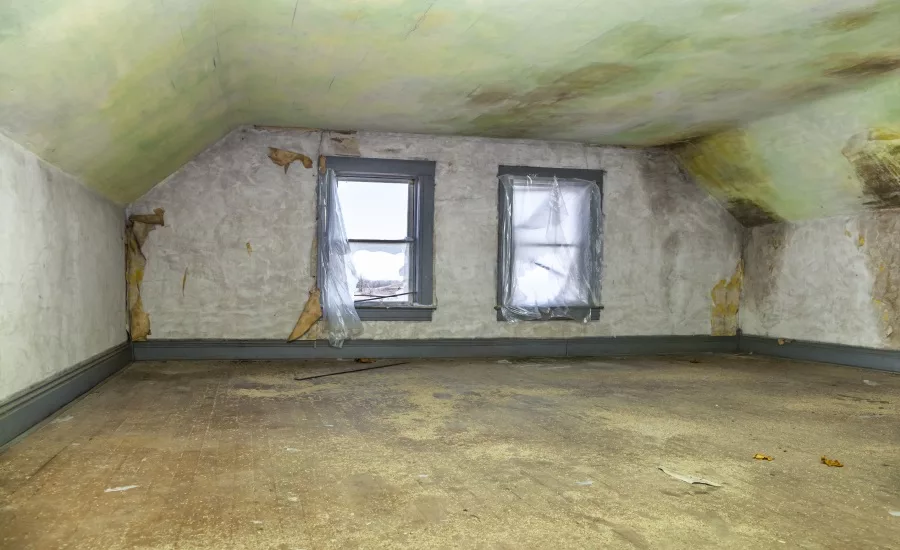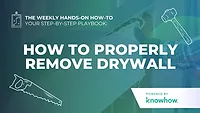5 Safe Methods to Properly Remove Mold

The IICRC S520 establishes the standard for microbial remediation, which lays out general work practices and methods. While this document is considered the standard and may be considered the Bible for remediation companies, there are additional effective work practices. At the end of the day, safety to our workers and customers is the top priority.
Below are five methods to follow to safely and effectively remove mold.
Establish Critical Containments
Before you do anything, make sure to mitigate the spread of spores by establishing critical containments upon arriving at the loss. Typically, we will seal off the visibly affected areas with plastic and tape. This helps contain the spores to the affected area and will impede the migration to other areas of the property. Adding a dehumidifier to control the humidity will also help to stop the occurrence of secondary damages caused by the elevated humidity, should there still be moisture present.
Slow Things Down to Speed Things Up
Common mistakes made by technicians are often a result of their tendency to hurry through a job. The more time they put into establishing an effective containment and employing dust free work methods will result in safer and cleaner jobs, with less call backs and re-cleans. Adequate measures should be taken to see that the walls don’t collapse, such as using the correct tape and staples where necessary. Dust free practices should also be used, such as saws equipped with vacuum attachments. Lastly, technicians should avoid kicking, smashing or any other aggressive methods of building material removal.
Proper PPE and Fit Tests
We all know how important it is to protect our workers when performing mold abatement; however, it is also important to make sure that the worker is physically able to perform the work. Before entering containment and donning a respirator, every worker should pass a respirator fit test and pulmonary physical examine. Fit tests can be performed by someone in your company who is a certified fit test instructor; however, the pulmonary physical examine should be performed by a medical professional. Together these tests will ensure that the workers are safe to be performing work in contained environments and under the physical stress of PPE.
Scrub Mode vs. Negative Air
Scrub mode and negative air are both effective methods of filtration. When technicians are working in the containment, it is standard practice to establish negative pressure, which helps mitigate the spread of mold spores to the outside of the contained area. When workers are not onsite, air filtration devices can be set to scrub mode. I recommend using lay flat ducting to route the exhaust air back into the containment. Furthermore, I would also recommend routing the ducted exhaust air to the opposite end of the containment, allowing for the path of air to travel across the affected areas. This will help pick up any mold spores that may be lingering. Should there be additional equipment available, adding extra air scrubbers to the inside of the containment will allow for even more filtration. Some experts may believe this is overkill, but I always recommend this practice in order to ensure a pass on the microbial clearance test.
Angle Grinder with Wire Brush Attachment
Traditionally, we are taught to sand the affected framing to remove surface mold, which is still an effective method; however, it is more effective and efficient to use a grinder with a wire brush attachment. With this attachment, technicians are able to complete jobs much faster and with fantastic results. Technicians also prefer the wire brush method to the sanding method due to ease of use. If done correctly, after the wire brush treatment there will be no visible indications of mold and sealing the building materials should not be necessary to pass a microbial clearance if the surfaces have been properly cleaned.
Looking for a reprint of this article?
From high-res PDFs to custom plaques, order your copy today!






